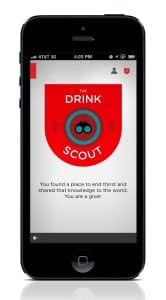When Jayson Schkloven, senior VP and partner of Merritt Group, sits down with clients and prospects these days, he discusses the dizzying array of PR channels that are available to help get the message out. Lately, gamification has started to creep into the discussion. “They’re very interested and want to understand the value proposition,” he said, referring to gamification. With the ubiquity of mobile devices, he added, “everybody games, from the CEO down to the clerk. It really has gone from a subculture to the mainstream.”
The video game industry, of course, nearly prints money. “Grand Theft Auto V,” which rolled out last month, is expected to generate $1 billion in sales in one month.
Gamification—which is distinct, yet similar to video games—is designed to enhance user engagement and/or online learning. Applying gamification for marketing purposes, of course, is not new. However, the rise of social media and the generation that grew up with it is putting gamification in a new light. It’s no longer just about giving people online “badges” to flare, but telling a story. And as inherent storytellers, PR execs are at the center of the evolution.

“The major attraction for clients to consider gamification is that they know it speaks to a lot of changing demographics, with a large group of baby boomers starting to retire and the millennials entering the decision-making space; these are people who grew up with [online] games,” Schkloven said.
Schkloven provided three recommendations for PR executives who are considering using gamification in their campaigns:
1. Align of team of specialists spanning user experience, game design and internal communications.
2. Conduct thorough research into your audience.
3. Understand how the tactics that are going to be used in gamification circle back to a broader and measureable PR strategy.
FUELED BY MOBILE
Social@Ogilvy, the social unit of Ogilvy & Mather, has several clients who are evaluating aligning gamification with their branding efforts, according to Senior VP Irfan Kamal.
“Initially, we saw a lot of excitement about it, now we’re focusing on how to use it to achieve business goals,” said Kamal, whose clients include Intel, Pfizer and Sun Power. “It’s more of a focus on identifying and engaging influencers in a game experience.”
Take the recently released Coca-Cola Freestyle Mobile App, which was created by Ogilvy & Mather on behalf of client Coca-Cola.
The free app makes it easier for users to find and interact with Coca-Cola Freestyle machines, which allow consumers to select from mixtures of flavors of Coca-Cola branded products that are then individually dispensed.
Users can create their own soft-drink concoctions and then share and save them via Facebook. They’re also invited to compete in online contests to enter a weekly sweepstakes for a $50 Cokestore.com gift card.
OFFLINE APPLICATION
Kamal said using gamification as a PR vehicle could backfire on brands if they don’t the drive the effort with strong storylines. “Brand integration needs to be subtle and the backdrop to the game experience,” he said.
Mobile devices may be fueling the growth of gamification. But the medium applies to offline PR channels, as well.
UBM Tech uses various gamification tools to engage people attending the technology publisher’s 25 events and conferences that are held throughout the year
For the company’s Interop conference last week in New York, for example, attendees were encouraged to visit a certain number of booths in return for chips that could be exchanged for prizes such as T-shirts, said Natalia Wodecki, senior director of communications for UBM Tech.
Such efforts are coupled with applying gamification to the online world, its natural habitat. At UBM’s Tech Marketing 360 event—formerly called Online Marketing Summit—users who retweeted a promo for the event a certain number of times were given a discount to attend.
With gamification tools, “you can go from the virtual to the physical,” Wodecki said. “They’re a good way to span both channels.” PRN
CONTACT:
Irfan Kamal, [email protected]; Jayson Schkloven, [email protected]; Natalia Wodecki, [email protected].
3 Tips for How PR Pros Can Parlay Gamification
While games like Grand Theft Auto V (GTAV) help feed our need for gamification, the approach isn’t a new one. The idea of giving a psychological reward for a certain behavior goes back centuries in the offline world, and is grounded in classic economic theory. Charities and community organizations have run 50/50 raffles to gamify donations, and General Mills’ successful Box Tops for Education program is a time-tested example of gamification to reward brand loyalty. One of our clients, Tabtor Math, a personalized tablet tutor learning system for kids K-6, shows the power of gamification. By building in elements—including a running “shot clock,” a points system that converts to gift cards and the ability for students to compare their performance against previous work—the program has produced impressive engagement numbers. Its students are not only improving their accuracy and lowering calculation times, but voluntarily glued to their tablets doing math every day, as though they were playing Angry Birds or Temple Run.
At Coyne PR, we apply gamification to make consumer programs more engaging. The key is to remember that gamification is not the endgame; it is an amplification strategy.
PR pros should keep these points in mind:
• Gamification is an engagement strategy that provides participants with a challenge, incentive and reward. This strategy activates some very basic responses and provides audiences a chance to engage brands.
• Every good game begins with a call to action. For your audience to be invested—even for a short-term goal—there has to be a compelling reason to be engaged. Your call to action should be something that defines what you intend your audience to do, say or share. You need to be clear about what the outcome will be—a task to complete so there is positive reinforcement for the reader or audience.
• Create a compelling journey. Every great game is constructed around a storytelling experience. This is no different from creating good PR materials. Whether you are developing a cause to address, a heroes’ journey or how to have a better product experience, your audience needs to be genuinely interested.
 Chris Cullmann is director of digital strategy at Coyne PR. He can be reached at [email protected].
Chris Cullmann is director of digital strategy at Coyne PR. He can be reached at [email protected].
 Brad Buyce is executive VP of client strategy at Coyne PR. He can be reached at [email protected].
Brad Buyce is executive VP of client strategy at Coyne PR. He can be reached at [email protected].
Ogilvy & Mather created a mobile gamified experience on behalf of client Coca Cola Freestyle. The app is designed to increase awareness and consumption by making it fun to discover Freestyle locations, create novel drinks and then share them.
This article appeared in the October 7 issue of PR News. Subscribe to PR News today to receive weekly comprehensive coverage of the most fundamental PR topics from visual storytelling to crisis management to media training.
